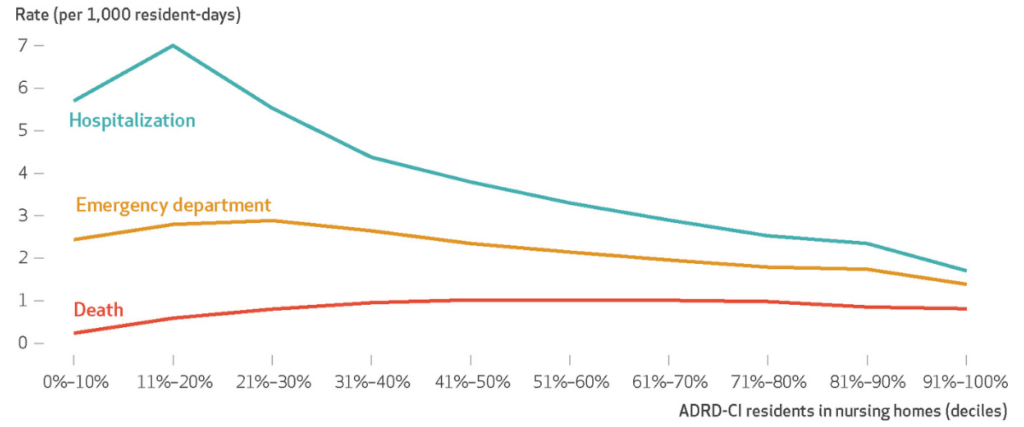How Dementia Patients are Raising Standards in Nursing Homes
Nursing homes with more dementia patients are better equipped to provide these patients with proper long-term care.

Read Time: 3 minutes
Published:
A person turning 65 has a 70% chance of needing long-term care at some point in their life. Many families make the difficult decision to place their relatives in nursing homes, as they might not be able to provide the round-the-clock care they need at home.
One in six people in the United States is over the age of 65. This means that at least 35 million people will require some form of long-term health care in the next few decades. The demand for nursing homes has never been higher, as more individuals with chronic health issues are turning to residential care.
Nursing homes are facing an influx of patients, almost half of whom have Alzheimer’s disease or other dementias. More than 3 million families have turned to nursing homes to care for their loved ones after their dementia diagnoses, as these diseases require specialized training and care.
But not all nursing homes can meet their patients’ needs. Some lack the resources, nurse staffing, and training needed to care for their residents. While this lack of quality care weighs on those who need additional assistance, like dementia patients, it may also affect the well-being of all nursing home residents.
Dana B. Mukamel and colleagues compared care across 15,718 nursing homes with varying numbers of dementia patients. They predicted that nursing homes with more dementia patients would have the training and resources necessary to prevent adverse health events for all their residents, including those without dementia.

The graph above compares the rate of hospitalization, emergency department visits, and death in nursing homes with an increasing number of patients with Alzheimer’s diseases, related dementias, or cognitive impairment (ARD-CI). These percentages were grouped in deciles, or intervals of 10%. The rate of hospitalizations (shown in blue), emergency department visits (shown in orange), and deaths (shown in red) is shown as a rate per 1,000 days spent by residents in the nursing home. As the number of residents with dementia increased, the rate of death remained unchanged, but the rates of hospitalizations and emergency department visits both decreased. The authors explain that nursing homes with more dementia patients were better equipped to provide proper care, and therefore, prevent patients from needing additional care.
Not all older people, particularly those with cognitive impairments, are able to access optimal care, and sending a family member to the right nursing home is in part a matter of luck. The authors recommend that policymakers establish national nursing care education and facility standards to resolve differences in nursing home quality.



